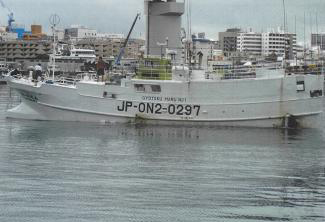After a fishing boat carrying seven Japanese fishermen capsized as the result of a collision with another fishing vessel 218 miles off the coast of Palau, the Automated Mutual-Assistance Vessel Rescue System (AMVER) is being credited with assisting in their safe return.
Rescued by the crew of the other ship, the men were relocated to General Santos, Philippines with the help of AMVER and efforts by the Department of Defense, the Japanese coast guard, the government of Palau and Pacific Mission Aviation.
What is the Automated Mutual-Assistance Vessel Rescue System (AMVER)
Created in response to the Titanic disaster of 1912, AMVER is a global system that aids in search and rescue missions. When there is distress on the water, the system allows rescuers to identify other vessels in the area to redirect them to the crew in need of assistance. Participation in the system is voluntary and ships are not forced to aid in rescues except to meet the minimum requirements set forth by international law.
How Did AMVER Help?
The computer-based system’s abilities allowed watchstanders at the Coast Guard Sector Guam to notice that there was distress aboard the Gyotoku Maru No.1, allowing them to begin search efforts quickly. The Japanese Coast Guard was able to give further details of the ship’s status hours later.
Sector Guam then received an alert from the Emergency Position-Indicating Radio Beacon (EPIRB). This confirmed the registration of the ship, a Western and Central Pacific Fisheries Commission longline tuna boat, with the Japanese Mission Coordination Center.
This was one of many search and rescue efforts by the Coast Guard’s 14th district, which is responsible for over twelve million miles of the Pacific. The 14th works with AMVER and participating ships to protect Guam, Saipan, main Hawaiian Islands and the American Samoa, fully guarding some of the most isolated portions of the Pacific.

